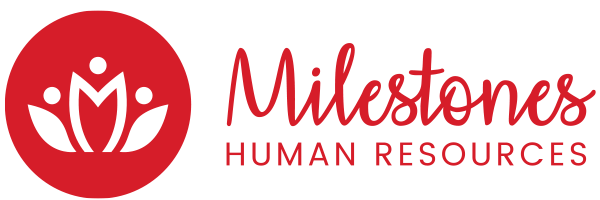We have been fielding questions about employees returning to work as the expiration date for the shelter in place is weeks away in Wisconsin. In addition to my previous blogs about how to welcome back employees, employers are bracing for the “what if” scenarios. While it’s ideal if employers can continue to have their employees telework, that isn’t an option for all employers.
For some, they must have employees return to the workplace to resume business. With this in mind, we’re sharing the following Q & A to be helpful. Employers should note, they need to be mindful of keeping both the ADA (Americans with Disabilities Act) and Wisconsin Fair Employment Act top of mind as they have these conversations and consider which employees to recall back to work and how to prevent the spread of COVID-19.
Can an employer require an employee to stay home or go home if they have any of the symptoms of COVID 19?
The short answer is yes. The EEOC has updated its major publication to now include COVID-19 information. Under the EEOC language, COVID-19 meets the definition of “Direct Threat” which means:
- If an employee is showing symptoms of coronavirus, an employer may send that employee home
- An employer may ask an employee about the symptoms they are experiencing in relation to COVID-19 (see below)
- Employers may take employee temperatures and record that information and keep the records in an employee medical file (see below)
How much information can an employer request from an employee if they call in sick?
During this COVID-19 pandemic, you can ask if they are experiencing symptoms of the COVID-19 virus. Do not ask the employee about any other underlying health conditions. Below are the latest symptoms per the CDC:
- Cough
- Shortness of breath or difficulty breathing
Or at least two of these symptoms:
- Fever, Chills, Repeated shaking with chills, Muscle Pain, Headache, Sore throat, New loss of taste or smell
Who should ask these questions of the employee and where are the answers stored?
Your best option is using Human Resources, or the person tasked with HR at your company, to ask these questions not their direct manager. The person collecting this information should note this information in a separate medical file. The person asking these questions will need to keep the information confidential as it is considered protected information under HIPAA.
What if an employee tests positive for COVID-19 and they were around others?
You’ll want to maintain the confidentiality of any employee’s health condition. You can get a list of who they were in contact with and advise those who may have been exposed that they have been exposed, do not mention by whom, and have those employees who were exposed self-isolate for 14 days. Only the person doing the tracing needs the employee’s name and should tell the employee’s Supervisor the employee is on leave but not share why they are on leave.
Can I take employees’ temperature and/or issue a COVID-19 test? Yes, but think it through first. Currently, the COVID-19 tests are hard to come by. If you’re taking temperatures or giving the COVID-19 test – put the following in place. Establish a policy that everyone’s temperature will be taken, not selected employees. Establish a cut off for temperatures (recommended is 100.4 degrees.) Outline a process for dealing with those that refuse temperature checks and/or how you’ll deny entry to those with temperatures. Notify employees that you’ll be taking temperatures in advance. Set aside a private room to take the temperatures. Decide who will administer the test (we recommend a 3rd party who is covered by HIPAA – staffing agencies are already advertising they can secure that outsourced option.) Outline, where the medical information obtained, will be stored (separate medical file, not the personnel file) and kept confidential as this information must be safeguarded. Also, the time to wait for and participate in the temperature/test-taking is considered paid time for the employee. Another option is to have employees take their own temperature before traveling to work and establishing a policy that requires employees to self-report if they have tested positive, have symptoms, or have been diagnosed with COVID-19.
If I’m hiring people, can I screen job applicants for COVID-19? Yes, as long as you do so for all job applicants and after a conditional job offer. You can take their temperature and/or use the COVID-19 test post-offer, pre-employment. If they test positive, you can delay the start date of that employee. If your hiring need is immediate, and the new hire cannot work due to COVID-19, you can withdraw the job offer.
What if I have an employee who is returning to work, but they don’t have childcare coverage (e.g. summer camp is closed)?
Those employees are still eligible for the extended Family Medical Leave (EFMLA.) The eligibility period for employees to apply and receive the EFMLA runs from April 1, 2020 through December 31, 2020. With businesses returning to “normal” operation, there may be employees who do not have care for their children and will qualify for the EFMLA. In the current situation, schools may be closed longer than businesses which may leave families with no care for their children. The definition of place of care includes summer camp, enrichment programs, and respite care. If these programs remain closed an employee will be faced with the decision of returning to work or childcare so we will see an increase in employees using EFMLA.
Can I make employees wear a facemask?
If the State or the Employer requires it, then the employee needs to wear the mask. If the employee can’t wear the mask, the employer will need to explore why the employee can’t wear the mask. If it is a medical reason, see the ADA section below.
Can an employer ask where an employee is personally traveling to keep the virus out of the workplace?
An employer can ask an employee about personal travel, and if it is travel to a high-risk area, the employer can require isolation upon return. If an employer does this, they must have a policy in place prior to the inquiry and treat all employees the same.
American with Disability Act & COVID-19 – What to consider:
The goals of the ADA is finding effective solutions to keep people with disabilities working. With the higher risk people per the effects of COVID-19, we will need to engage in conversations to see how we can make them feel safe and able to work. This is a change in prior ADA guidance.
As a reminder, which employers are covered by the ADA? Any employer with 15 or more employees in total. Also, in Wisconsin, disability and pregnancy fall user the Wisconsin Fair Employment Law which is in regard to both employee and job applicants.
IMPORTANT: If you had employees teleworking due to COVID-19 and Shelter in Place – now is the time to document the hardships of having to telecommute so that it is not an automatic accommodation when an employee makes a future ADA request. Now is the time to identify and document any resulting inefficiencies and difficulties due to telecommuting before an ADA request for remote work arises.
We have an employee who has requested an ADA accommodation of teleworking in the past, we allowed it with shelter in place, but need to have them back at the office, what do we do?
It’s likely you documented that the telework was due to COVID-19 and the shelter in place. You’ll want to note the hardship telecommuting has caused your business and this is why it can’t be continued. Have an interactive conversation (use legal counsel and/or Human Resources) to document this conversation with that employee. You’ll want to look for other ways to accommodate that employee (see below.)
 What if an employee just isn’t comfortable or fears coming back to work because of COVID-19?
What if an employee just isn’t comfortable or fears coming back to work because of COVID-19?
Being uncomfortable or fearful is not considered an ADA disability. However, if an employee offers that their fear is due to an underlying mental or health condition, then you need to engage in an ADA interactive questions and seek to find accommodations.
For instance, if the employee mentions a mental health condition due to the COVID-19 (e.g. they have anxiety and it is flared up due to COVID-19) then have an ADA interactive conversation.
What Return to Work or Stay At Work Accommodations that might be considered under ADA?
- Social Distancing – tape off areas so people stay 6 feet away, rearrange workstations, put up plastic barriers, use staggered shifts to limit the number of people at work.
- Providing masks and gloves. Alternatively, can offer an allowance for employees to purchase their own mask (if they’re allergic certain materials) or allow them to use the faces shield. You can allow people to take off their masks or shield when shut in their office if they can’t wear the mask ongoingly.
- Allowing isolated work areas, the opportunity to work different hours, or telecommuting.
Guidance on Re-Opening Business:
There are several web sites available for updates and resources regarding opening for business again and bringing employees back to the worksite. When selecting workers to return to work, employers will want to be very careful. Employers will want to avoid using individual employee’s high-risk condition information (perceived or actual) to not bring certain employees back, as it can spark a discrimination case. It’s important not to be discriminatory when selecting employees to return to work.
Here are some helpful websites for employers:
The CDC has many resources to provide employers guidance and can be found here: https://www.cdc.gov/coronavirus/2019-ncov/community/guidance-business-response.html
OSHA has issued guidance on preparing workplaces for COVID-19 and the return to business operations and can be found at https://www.osha.gov/Publications/OSHA3990.pdf
Create a Reopening Guidance on Cleaning and Disinfecting (https://www.cdc.gov/coronavirus/2019-ncov/community/reopen-guidance.html
Public Health Madison & Dane County: https://www.publichealthmdc.com/coronavirus/recommendations-and-guidance
Wisconsin Department of Health Services: https://www.dhs.wisconsin.gov/covid-19/employers.htm
State of Wisconsin Department of Health Services Badger Bounce Back: https://content.govdelivery.com/attachments/WIGOV/2020/04/20/file_attachments/1431309/EMO31-BadgerBounceBack.pdf
We recognize that this is a lot of information for employers to work through. If we can be of help, please reach out via phone at 608-850-9797 or e-mail at angie@milestoneshr.com.
Please note: This is not intended to be legal or financial advice. Please seek out legal counsel when needed.

